gOS Gadgets aims Ubuntu at cloud computing
Last updated Jan 7, 2009 — 25587 views The gOS (“good OS”) project has issued an SP1 release of gOS 3.1 Gadgets. This latest gOS release implements numerous package updates, bug fixes, and configuration enhancements, and continues gOS’s strong dependence on Google’s web-based applications.
The gOS (“good OS”) project has issued an SP1 release of gOS 3.1 Gadgets. This latest gOS release implements numerous package updates, bug fixes, and configuration enhancements, and continues gOS’s strong dependence on Google’s web-based applications.
At its core, gOS 3.1 Gadgets is built from Ubuntu 8.04 (Hardy Heron). Modifications include a bright green theme, several changes to the distribution’s default applications, and an increased emphasis on web-based applications — especially Google’s.
gOS 3.1’s default desktop — filled with colorful gadgets
(Click image to enlarge)
Welcome to “cloud computing”
On arriving at gOS’s desktop for the first time, you’re greeted with a dizzying array of Vista-like desktop gadgets that open up applications within Mozilla Prism windows when clicked. This approach makes web-based applications — Google Mail, Google Calendar, and YouTube, for example — appear to be native Linux applications, rather than web pages embedded in a Firefox browser.
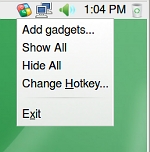 According to the gOS project, users can select desktop gadgets from an online repository of 100,000 Google Gadgets. The default gOS desktop (shown above) comes with gadgets for Google Calendar, Google News, weather, calculator, and several system tools. Additional gadgets can be added by right-clicking a small, multicolored icon located near the right edge of the top-of-page GNOME panel (see image above-right). From that icon you can choose Add gadgets, Show all, or Hide all gadgets.
According to the gOS project, users can select desktop gadgets from an online repository of 100,000 Google Gadgets. The default gOS desktop (shown above) comes with gadgets for Google Calendar, Google News, weather, calculator, and several system tools. Additional gadgets can be added by right-clicking a small, multicolored icon located near the right edge of the top-of-page GNOME panel (see image above-right). From that icon you can choose Add gadgets, Show all, or Hide all gadgets.
Prism-powered desktop gadgets are not the only unusual aspect of the gOS desktop. The other is a set of 16 application-launch icons located at the bottom of the desktop:
A row of animated application-launch icons appears at the bottom of gOS’s desktop
Mouse over each of the icons and it grows larger; click on one and its associated application launches. This animated application-launch function, based on a desktop add-on called wbar, can also be added to a standard Ubuntu installation (watch for a future DeviceGuru article on this topic).
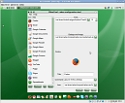 At first I couldn’t figure out how to modify gOS’s standard set of application-launch icons at the bottom of its desktop. After a bit of googling, however, I realized that the OS comes with a wbar configuration utility. You can find it here: gOS menu > Accessories > WbarConf. It lets you add/remove apps from the set, and change the size of the font that shows up in the animated launcher icons.
At first I couldn’t figure out how to modify gOS’s standard set of application-launch icons at the bottom of its desktop. After a bit of googling, however, I realized that the OS comes with a wbar configuration utility. You can find it here: gOS menu > Accessories > WbarConf. It lets you add/remove apps from the set, and change the size of the font that shows up in the animated launcher icons.
I was pleased to see that gOS comes with Adobe Flash preinstalled. This isn’t too surprising, of course, since it’s needed for the included YouTube launcher to actually be able to play videos.
Thankfully, a Firefox Flash plugin comes preinstalled
(Click image to enlarge)
On the other hand, a Java plugin for Firefox didn’t come preinstalled. I remedied this by selecting/installing the “Sun Java6” package (along with its dependencies) using the tool available at gOS menu > Add/Remove. (Note: before doing this, enable all software repositories using the tool available at gOS menu > System > Administration > Software Sources.)


Adding Sun’s Java plugin to Firefox
(Click thumbnails to enlarge)
Oh, and I almost forget to mention one more thing I really like about gOS Gadgets 3.1. It comes with the Medibuntu package repository preinstalled, offers a wealth of multimedia applications, codecs, and drivers available at the click of a mouse. Thanks to the presence of Medibuntu in gOS’s repository catalog, you can use the software Add/Remove tool (gOS menu > Add/Remove) easily to select and install numerous media streamers, CD/DVD players and rippers, and much more.
Additional screenshots from my brief investigation of gOS 3.1 Gadgets (SP1) appear below. They show many of gOS 3.1’s key features, including its application menus, default desktop gadgets, application launchers, and tools for adding desktop gadgets and modifying the bottom-of-screen animated application-installer.
gOS 3.1 Gadgets (SP1) screenshots — click each to enlarge






















gOS 3.1 Gadgets (SP1) screenshots — click each to enlarge
Further thoughts
Overall, gOS represents an intriguing Ubuntu re-spin. Its most significant contribution will probably be its use as a proof-of-concept platform for netbooks, netpads, and MIDs intended to run mostly web-based applications — what might be called mobile “cloud computing” devices.
At this point, I’m not sold on using either Prism-based desktop gadgets or wbar-based animated application-launch icons on my own systems. However, that doesn’t mean I won’t warm up to these two intriguing innovations in the future.
In any event it’ll be interesting to watch gOS evolve. In fact, the gOS team recently announced that an even lighter-weight gOS implementation, known as gOS Cloud, is being readied for shipment to device makers. Although it’s not available for public download at this point, here’s what gOS Cloud is intended to accomplish:
“Cloud is a small operating system that boots directly into a browser environment in seconds. Deeply integrated with the operating system, Cloud is able to power off, adjust volume, and perform other system functions and run rich client applications all from within the browser. In addition, Cloud can switch to Windows and be preloaded on computers with Windows plus Cloud, or just Cloud.”
For more information about gOS Gadget, or to download the OS and give it a whirl, visit the project’s website.


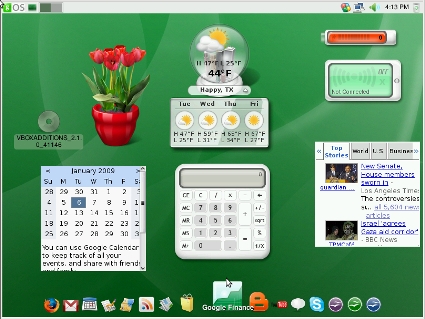
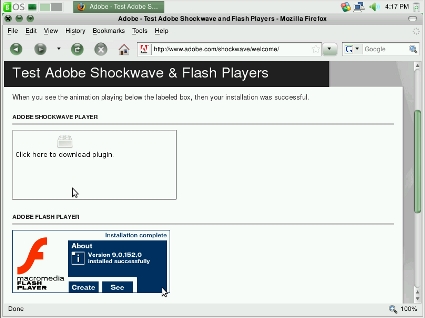

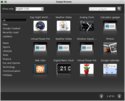
I tried it out yesterday and was very impressed with how they’ve blended internet resources with traditional applications. I think the gOS Cloud version is a logical progression and will be very useful. For a home desktop I don’t need or particularly want most of my applications to be dependent on my internet connection, but if I had a netbook and was using it as a portable device, then I would prefer *all* the applications be net based.
The development of this interesting OS is another example of how free software like Linux enables people to innovate. Who could do something like this with Windows? Only MS would have the legal capacity to use Windows in an innovative way like gOS uses Linux.
Kent here… Lead of gOS web projects… For instance I created the gOS Homepage that starts up when loading up Firefox.
The reason this is important is if you have a netbook you will notice that the homepage is specifically geared to lower resolutions but also looked just as good at higher resolutions too. gOS includes small things just like this all over the OS which make it very friendly for netbooks.
Take a look now you will see what I mean. (screenshot is above)
GOS is just a remastered Ubuntu using the Ubuntu repositories…
Pretty cool. Might swap my mom’s Ubuntu with gOS.
All of the features in GOS can also be available in existing Ubuntu proper with little customization. One does not need to be a Linux geek to that . Therefore, I do not see any reason to replace Ubuntu with GOS.
Why go for gOS? With Ubuntu, there are a lot more packages available to be installed, rather than sticking with gOS. I do like the term that it has something related to gadgets and Google apps, but that should not stop Ubuntu from linking to Google repositories and installing these Google apps. So, the bottomline is, Ubuntu is still a better OS than gOS.
The biggest problem I have with gOS is the Wbar – it won’t let the user modify all the Google crap on it. Get rid of the google junk and gOS might be alright.
@Ron: did you try running wbarconf? It’s installed as part of gOS and should allow you to add/delete/rearrange Wbar dock entries.
@deviceguru
thanks for all your infos.
Why are people comparing this so directly with Ubuntu?
You could say the same of Ubuntu itself, as it’s based on the Debian testing branch.
Thus ‘Ubuntu is just like Debian, which has a lot more packages, and lalalala.’ GET OVER IT.
While I’ve been using Ubuntu it’s not the end-all be-all of linux.
This distro is made for ease of use on a low-powered system.
It utilizes a WM that uses less resources than the standard on Ubuntu.
Sure you can install Enlightenment on ubuntu, but then you have to remove some of the GNOME files to reduce the space used (which it at a premium on a 2Gb eeePC or other netbooks). This makes it cleaner and easier to use for that purpose, which is the purpose of the developers.
gOS 3.1 is meant to be a lightweight distro for older systems, which are primarily for internet and word processing. If you have a new system, or a powerful one go for Ubuntu, it’ s great. If not this is a very good alternative.
Yeah but you can’t access it from a web browser. It’s pretty much Ubuntu with web based applications. It doesn’t even sync with the cloud.
I am a bit of a Linux geek, but still a non-command line guy. I have been fooling around with hundreds of distributions on all kinds of moderate to old machines. I have loaded Linux for my wife, kids and retired dad (80 years old). I have been at it since knoppix 3.4 ( a watershed opening up live CD’s to the world)
I love the stability and the virus free, low maintenance, aspect of linux.
This distribution (GOS 3.1 Gadgets) rocks as a daily driver around the house. It runs on our kitchen counter laptop and allows the whole family to access gmail and all the other great Google apps.
This is the direction that home computing is going and while GOS might be a remaster of Ubuntu, well….it is a great one for the layman user. It feels tighter, cleaner and more modern….turns old windows machines into something that competes with MAC in terms of aesthetics and reliability . Hey isn’t Ubuntu a remaster of Debian..? If you tell me it’s not…ask yourself…aren’t you too geeky for the average layman Linux user!
Tagging along with Ubuntu makes perfect sense. While I love Linux, the real code geeks just don’t understand the average user. That’s where Microsoft made their money.
GOS is a great, (read user friendly) distro….We might just switch over from PCLOS (another great one) on all our boxes.
I would love to see how many kids would like to get their hands on this distro…They are the future for linux!
Warm regards
CB